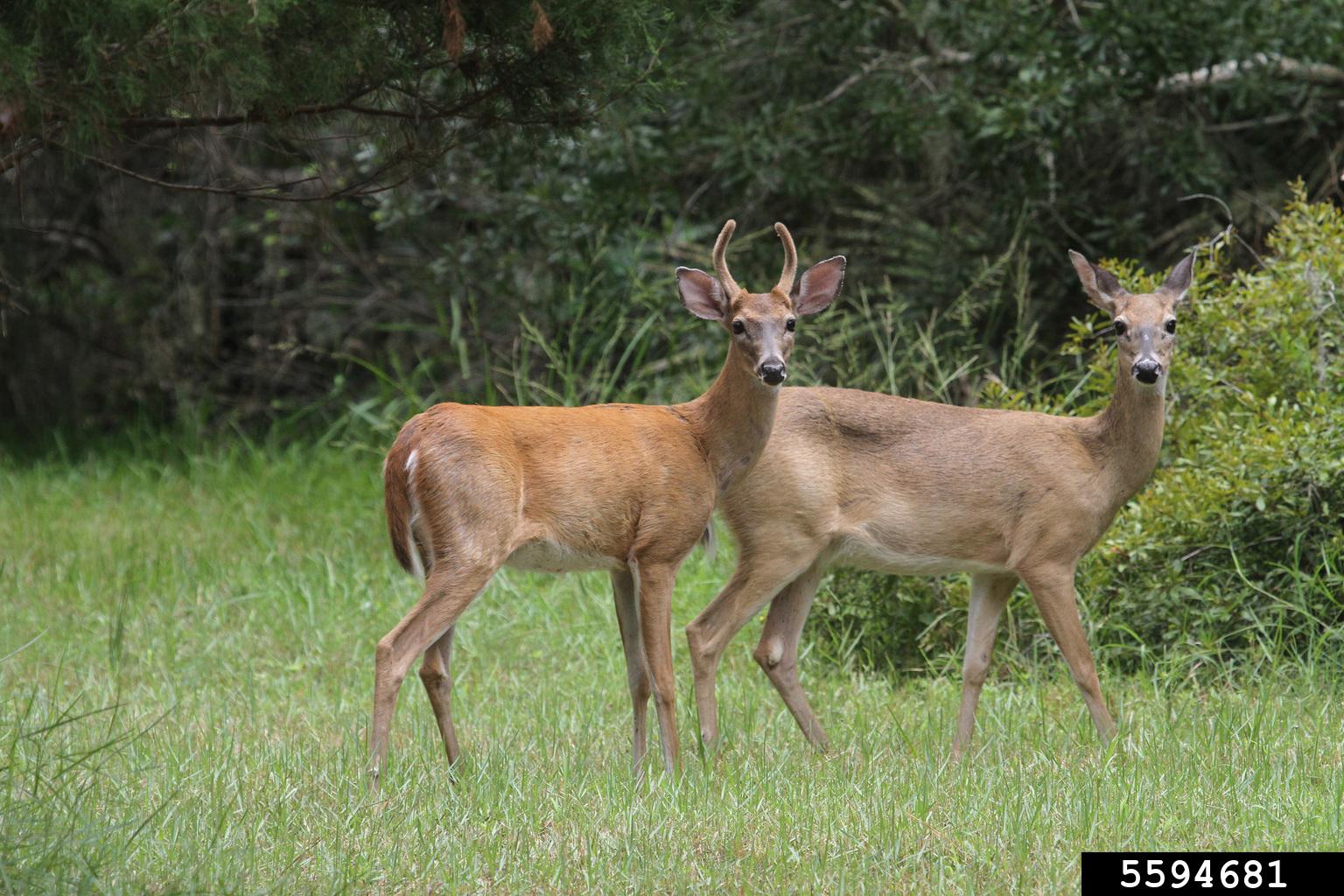Deer can also severely damage shrubs and trees by rubbing their antlers to remove the velvet covering. Antler rubbing usually occurs on small flexible saplings, tree trunks, and limbs. Damaged bark may have vertical scrapes and shredded areas with the underlying wood exposed. Male deer, or bucks, develop antlers from April through August. The antlers are covered with surface "velvet", a soft vascular material that helps to nourish the antlers as they develop. During the fall breeding season the velvet dries and is rubbed off as the antlers are polished. Antlers are shed in midwinter.
Management
Begin repellants or scare devices as soon as you notice deer activity. Control is more likely if deer do not form a habit of browsing on your property. For best results, alternate deer control methods. Deer are extremely adaptable and quickly become accustomed to new sounds and smells. When landscaping, choose ornamentals that are rarely or seldom damaged by deer. Under severe weather conditions, deer may feed on any plant material. Refer to List of Deer Resistant Native Plants.
To determine the most effective control, consider the pattern of damage, the deer population, site characteristics, and the economic impact of the damage. In general, summer damage is less extensive than winter damage, and can be controlled using repellants, scare devices, or low cost temporary fencing. Permanent fencing, to prevent long term damage to trees and shrubs, may be the only realistic solution to winter deer browsing. Ask yourself how much time and money you are willing to spend to reduce deer damage. What is the value of the plant material you are losing? Base your deer control program on the most severe damage occurring in a 5-year period. Investigate deer population, density, and travel routes in your area through the Department of Natural Resources. This information, as well as site considerations, such as lot size and local covenants, will help you decide the best combination of deer control options.
Effective controls for antler rubbing damage include fencing, scare devices and tree protectors. Fencing and other deer control methods are discussed in detail in Tree protectors, such as plastic tree wrap, tubes, or 4' woven wire cylinders, provide a physical barrier to prevent damage. Repellants are not an effective control against antler rubbing.





